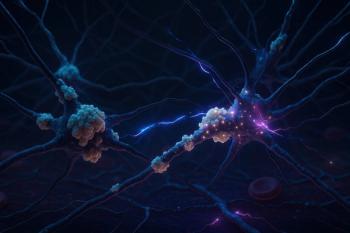
- Vol 42, Issue 4
Diagnostic Considerations in Clinical Cognitive Assessment
Key Takeaways
- Neurocognitive disorder (NCD) encompasses acquired cognitive impairments, with early diagnosis crucial for effective treatment.
- Cognitive screens like MoCA are practical but limited compared to neuropsychological testing, necessitating specialized screens for certain populations.
The diagnostic criteria and terminologies for cognitive disorders continue to evolve. DSM-5 introduced the term neurocognitive disorder (NCD) to describe conditions in which an acquired cognitive impairment is the core deficit, encompassing less severe forms of cognitive impairment (mild NCD), nonamnestic presentations, disorders affecting a single cognitive domain, and cognitive disorders in younger adults that could potentially be reversible.1 Nonetheless, the older terms mild cognitive impairment (MCI) and dementia remain widely used in clinical and research settings and are allowed by DSM-5 for disorders in which their use is customary.1
Individuals with both dementia and major NCD lose the ability to compensate and begin to experience functional decline, initially in instrumental activities of daily living (ADLs), followed by basic ADLs. Whereas the 2024 revised diagnostic criteria for
The pathological processes underlying neurodegenerative and vascular cognitive disorders start years before the onset of cognitive decline. It is now more important than ever to make an early diagnosis, given the recent availability of new treatments that are most effective in the early stages of cognitive decline. Subjective and/or objective cognitive concerns should form the basis of any cognitive assessment (both should be present, per DSM-5), as there is insufficient evidence at present to support assessing cognition in asymptomatic older adults.3 A competent cognitive assessment should generate a reasonable pretest probability of the underlying pathology based on the cognitive and neuropsychiatric history and a full neurological and psychiatric examination. Questions regarding the onset and progression of symptoms with particular emphasis on the initial cognitive and behavioral domains affected, the presence or absence of danger, and the impact of the symptoms on the caregiver(s) are particularly important. A cognitive assessment should be deferred in the presence of confounding factors, including delirium, intoxication or withdrawal from alcohol or other substances, uncontrolled pain, sleep deprivation, excessive medication-induced sedation, severe acute stress, and severe neuropsychiatric symptoms.
For MCI and Dementia
Cognitive screens are routinely used in the clinic as they offer a practical and efficient alternative to detailed neuropsychological testing. Like all screening tools, a good cognitive screen should have high sensitivity for identifying cognitive impairment. Available cognitive screens can be classified as very brief (5 minutes or less), brief (6-15 minutes), or comprehensive (see
Brief cognitive screens are most often used in routine clinical practice. These include the Mini-Mental Status Examination (MMSE), published in 1975 to assess mental status in hospitalized patients17; the Montreal Cognitive Assessment (MoCA), published in 20058; and the Saint Louis University Mental Status (SLUMS) examination, published in 2006.18 The MMSE is relatively insensitive to MCI and executive dysfunction,19 and it is now recommended for use only when comparison with a prior MMSE score is of clinical interest. The validity of the SLUMS exam is comparable with that of the MoCA, with diagnostic accuracies in the 74% to 77% range for MCI and the 96% to 98% range for dementia,18 but the MoCA is more widely used today. This is because it has been translated into more than 100 languages, has several short forms, and has versions suitable for use in those with vision or hearing impairment, as well as versions validated for telephone and telehealth administration (available at
The screening instrument(s) should be selected based on the cognitive domain(s) known to be impaired in the suspected dementia type. Clinicians should be open to selecting alternative scoring methods for weighing certain test items differently or using additional screening tools to supplement the primary screen to increase its sensitivity. In practice, this could involve selecting a scoring method to make the MoCA more sensitive to executive functions and visuospatial functions in individuals with Parkinson disease in whom these cognitive domains are typically impaired,21,22 or supplementing the MoCA with a 1-minute semantic (animal) fluency test in individuals suspected of having AD where the disparity between the semantic and phonemic fluency can discriminate AD from frontotemporal dementia.23
Although the MoCA or the SLUMS exam can be used in primary care settings, very brief cognitive screens are often preferred in primary care due to their brevity and ease of administration.24 The Mini-cog is a very brief screen that is a composite of a 3-item word-list recall and a clock draw test using a predrawn circle serving as the distractor item between registration and free recall.24 However, there is not enough evidence supporting its utility for detecting dementia in primary care settings,25 and the short 3-word list, the short delay before testing for delayed recall, and the omission of cued recall make it rather insensitive to AD-MCI.26 It also does not have items that would render it useful in assessing the clinical syndromes associated with frontotemporal lobar degeneration (FTLD) pathology.
In Other Populations
This discussion would be incomplete without briefly mentioning cognitive screening in clinic populations in whom cognitive impairment is not the core deficit. Cognitive deficits are widespread in severe mental illness. Although the underlying pathology is often neurodegenerative and vascular,27 individuals whose cognitive deficits are better explained by another mental disorder do not qualify for an NCD diagnosis in DSM-5 regardless of the severity of cognitive impairment.
Cognitive screens, such as the MoCA, can always be used in individuals with severe mental illness, but the advantage of using specialized cognitive screens is their added diagnostic sensitivity.28 The Screen for Cognitive Impairment in Psychiatry is a brief cognitive screen that was constructed to assess cognitive function in patients with psychotic and affective disorders. It assesses 5 cognitive domains: immediate and delayed verbal list learning, working memory, verbal fluency, and psychomotor speed.13 The self-report Functional Assessment of Cancer Therapy–Cognitive Questionnaire (FACT-Cog) was constructed for use in patients with cancer and evaluates perceived cognitive impairments along with perceived cognitive abilities, noticeability, and quality of life.14 In chemotherapy- related cognitive impairment, the self-rated FACT-Cog serves an important role due to the lack of association between perceived and objectively confirmed cognitive impairment following chemotherapy.29 The downside of using specialized screens is that they require busy clinicians to become familiar with more than 1 screening test, some of which may have complex scoring schemes (eg, the reverse scoring system of the FACT-Cog). Therefore, they should be reserved for use only in specialty clinics.
Limitations of Cognitive Screening
Cognitive screening has limited diagnostic accuracy compared with neuropsychological testing, which is most evident when assessing the clinical syndromes associated with FTLD pathology (
Underlying Diseases
Identifying the pattern of impairment across cognitive domains can provide support for or against a suspected pathophysiology (
In addition to the domains, test administration and scoring can also impact sensitivity. Multiple word-list learning trials, cued recall, and recall after a long delay best classify older adults as AD-MCI or healthy controls,26 but the MoCA only allows 2 learning trials and a short delay before testing for delayed recall. Impaired free recall that is minimally improved by cueing (“amnestic syndrome of the hippocampal type”) is thought to be highly suggestive of typical late-onset AD.33 A scoring system for cued recall was added to MoCA version 8.1 in the form of the Memory Index Score (MIS); in combination with the MoCA-total score, the MIS can predict short-term conversion from AD-MCI to dementia with greater likelihood.34
Even when the cognitive domains affected are accurately identified, there remain several diagnostic challenges to determining the underlying disease. The co-occurrence of multiple pathologies is common and increases with advancing age.35 The lack of 1:1 clinicopathologic correlation further compounds the diagnostic complexity. Each pathology can generate several clinical phenotypes; conversely, a given cognitive deficit can be associated with several disparate etiologies. Thus, typical late-onset AD pathology is associated with an amnestic presentation. Still, AD can also present with primarily visual (visual variant or posterior cortical atrophy), dysexecutive (dysexecutive variant), verbal (logopenic aphasia), behavioral (behavioral variant), or motor (corticobasal syndrome) symptoms (
When the underlying etiology remains elusive after a comprehensive workup, including blood tests to rule out reversible causes, or when the clinical history and cognitive screening results are discordant, neuropsychological testing and/or biomarker testing are the next steps in the diagnostic algorithm. Neuropsychological testing is the gold standard for cognitive assessment, but it is not always available, necessary, or easily tolerated by individuals who are cognitively impaired. Neuroimaging and biofluid biomarker testing can be useful even in cases where there is a high degree of confidence in the clinical diagnosis. In an autopsy study of 179 individuals clinically diagnosed with probable AD dementia, approximately 45% were found to have one or more co-pathologies instead of pure AD neuropathology (ie, only plaque and tangle pathology), and 12% did not have AD at all.37 Further discussion of neuropsychological and biomarker testing is outside the scope of this article.
Concluding Thoughts
Cognitive assessment should be triggered by cognitive concerns and should include a detailed history from the patient and a knowledgeable informant, a psychiatric and neurological examination, cognitive screening, and targeted testing. It is advisable for the clinician to select 1 or 2 cognitive screens for routine use based on the practice setting. The final goal of the assessment should always be to make a pathological and etiological diagnosis, whenever possible, to guide treatment.
Acknowledgments: The authors gratefully acknowledge the assistance provided by Nathan Hantke, PhD, clinical neuropsychologist and associate professor in the Department of Neurology at Oregon Health and Science University in Portland, Oregon, who reviewed an early draft of this article and provided valuable feedback.
Dr Wise is an assistant professor in the Department of Psychiatry at Oregon Health and Science University and a geriatric psychiatrist at Portland VA Medical Center. Dr Aga is a geriatric psychiatrist at the Layton Aging and Alzheimer’s Disease Research Center and an adjunct assistant professor in the Department of Neurology at Oregon Health and Science University.
References
1. DSM-5: Diagnostic and Statistical Manual of Mental Disorders (Fifth Edition, Text Revision). American Psychiatric Association; 2013.
2. Jack CR Jr, Andrews JS, Beach TG, et al.
3. Owens DK, Davidson KW, Krist AH, et al; US Preventive Services Task Force.
4. Brodaty H, Pond D, Kemp NM, et al.
5. Borson S, Scanlan JM, Chen P, Ganguli M.
6. Galvin JE, Roe CM, Powlishta KK, et al.
7. Galvin JE, Roe CM, Coats MA, Morris JC.
8. Nasreddine ZS, Phillips NA, Bedirian V, et al.
9. Tariq SH, Tumosa N, Chibnall JT, et al.
10. Teng EL, Chui HC.
11. Jorm AF, Jacomb PA.
12. Jorm AF.
13. Purdon SE. The Screen for Cognitive Impairment in Psychiatry (SCIP): Instructions and Three Alternate Forms. PNL Inc; 2005.
14. Wagner LI, Sweet JJ, Butt Z, et al. Measuring patient self-reported cognitive function: development of the functional assessment of cancer therapy-cognitive function instrument. J Support Oncol. 2009;7(6):W32-W39.
15. Hsieh S, Schubert S, Hoon C, et al.
16. Keefe RS, Goldberg TE, Harvey PD, et al.
17. Folstein MF, Folstein SE, McHugh PR.
18. Cummings-Vaughn LA, Chavakula NN, Malmstrom TK, et al.
19. Devenney E, Hodges JR.
20. Borson S, Sehgal M, Chodosh J.
21. Fengler S, Kessler J, Timmermann L, et al.
22. Aarsland D, Brønnick K, Ehrt U, et al.
23. Rascovsky K, Salmon DP, Hansen LA, et al.
24. Borson S, Scanlan J, Brush M, et al.
25. Seitz DP, Chan CC, Newton HT, et al.
26. Rabin LA, Paré N, Saykin AJ, et al.
27. Liu Y, Xiao X, Yang Y, et al.
28. Belvederi Murri M, Folesani F, Costa S, et al.
29. Hutchinson AD, Hosking JR, Kichenadasse G, et al.
30. Gefen T, Teylan MA, Besser L, et al.
31. Coen RF, Robertson DA, Kenny RA, King-Kallimanis BL.
32. Freitas S, Simões MR, Marôco J, et al.
33. Dubois B, Albert ML.
34. Julayanont P, Brousseau M, Chertkow H, et al.
35. McAleese KE, Colloby SJ, Thomas AJ, et al.
36. Olfati N, Shoeibi A, Litvan I.
37. Schneider JA, Arvanitakis Z, Leurgans SE, Bennett DA.
Articles in this issue
8 months ago
Legal and Ethical Issues in Emergency Psychiatry8 months ago
2025 Is a Landmark Year for Emergency Psychiatry8 months ago
Bad Debts...Newsletter
Receive trusted psychiatric news, expert analysis, and clinical insights — subscribe today to support your practice and your patients.














